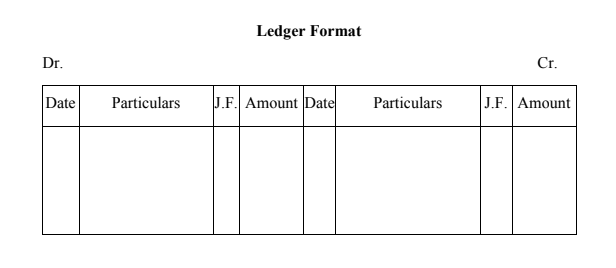Understanding Ledger: The Backbone of Accounting
A ledger is a crucial component of accounting that helps businesses record, classify, and summarize financial transactions systematically. It serves as the central repository for all financial data, ensuring accuracy and transparency in financial reporting. In this blog post, we will explore the concept of what is Ledger vs. Journal: Understanding the Backbone of Accounting, and its types, provide examples, and highlight its differences from a journal.
What is a Ledger?
A ledger, also known as a general ledger, is a book or a digital record where all financial transactions of a business are recorded in categorized accounts. Each transaction recorded in the ledger affects at least two accounts, following the double-entry bookkeeping system.
The ledger is categorized into different accounts, such as:
- Assets (Cash, Accounts Receivable, Inventory, etc.)
- Liabilities (Loans Payable, Accounts Payable, etc.)
- Equity (Owner’s Capital, Retained Earnings, etc.)
- Revenues (Sales, Service Income, etc.)
- Expenses (Rent, Utilities, Salaries, etc.)
Each account in the ledger maintains a balance that helps accountants and financial professionals track financial health and prepare financial statements like the balance sheet and income statement.
Format of Ledger Account

Types of Ledgers
- General Ledger: Contains all the accounts of a business and records all transactions.
- Subsidiary Ledger: A detailed ledger that supports the general ledger. Examples include:
- Accounts Receivable Ledger (customer-specific transactions)
- Accounts Payable Ledger (supplier-specific transactions)
- Inventory Ledger (records stock movements)
Example of a Ledger Entry
Let’s assume a business, XYZ Corp., made a sale of $1,000 on credit to a customer on January 10, 2025. The transaction would be recorded in the ledger as follows:
| Date | Account | Debit ($) | Credit ($) |
|---|---|---|---|
| Jan 10, 2025 | Accounts Receivable | 1,000 | |
| Jan 10, 2025 | Sales Revenue | 1,000 |
This entry indicates that the business has increased its receivables (asset) and recorded revenue earned.
Difference Between Ledger and Journal
A journal and a ledger are both essential parts of accounting, but they serve different purposes:
| Aspect | Journal | Ledger |
| Purpose | First record of financial transactions | Classifies and summarizes transactions |
| Recording Format | Chronological order | Account-wise classification |
| Number of Entries | Each transaction is recorded as a journal entry | Transactions are posted in individual accounts |
| Examples | Sales Journal, Purchase Journal | General Ledger, Accounts Payable Ledger |
| Final Output | Not used directly for reports | Used to prepare financial statements |
How Transactions Move from Journal to Ledger
When a financial transaction occurs, it is first recorded in a journal in a journal entry format, which includes the date, accounts affected, debit, and credit amounts. These journal entries are then posted to the corresponding accounts in the ledger.
Example:
Assume a company purchases office supplies worth $500 on credit on January 15, 2025. The journal entry will be:
Journal Entry:
| Date | Account | Debit ($) | Credit ($) |
| Jan 15, 2025 | Office Supplies | 500 | |
| Jan 15, 2025 | Accounts Payable | 500 |
When this transaction is posted to the ledger, it will be categorized under the relevant accounts:
Office Supplies Ledger:
| Date | Particulars | Debit ($) | Credit ($) | Balance ($) |
| Jan 15, 2025 | Purchase on Credit | 500 | 500 |
Accounts Payable Ledger:
| Date | Particulars | Debit ($) | Credit ($) | Balance ($) |
| Jan 15, 2025 | Office Supplies Purchase | 500 | 500 |
Importance of Ledger in Accounting
- Financial Organization: Helps keep financial records well-structured and categorized.
- Accuracy in Reporting: Ensures that all transactions are recorded systematically, reducing errors.
- Preparation of Financial Statements: Ledgers provide the necessary data for preparing balance sheets, income statements, and cash flow statements.
- Audit and Compliance: Helps businesses comply with financial regulations and makes audits smoother.
- Decision-Making: Gives business owners and managers insights into financial performance.
Conclusion
A ledger is an essential accounting tool that categorizes and summarizes financial transactions, ensuring transparency and accuracy. While journals serve as the first point of entry, ledgers provide a detailed and organized record for financial reporting. Understanding the difference between a journal and a ledger is key to mastering accounting fundamentals, whether you’re a business owner, student, or finance professional.
You’ve learned about what is Ledger vs. Journal: Understanding the Backbone of Accounting; now take the next step by reading our post on Journal Entries Explained: A Beginner’s Guide with Examples.
[…] the Trial Balance: A Step-by-Step Guide with Examples Ledger vs. Journal: Understanding the Backbone of Accounting Journal Entries Explained: A Beginner’s Guide with Examples Mastering Cashbook […]